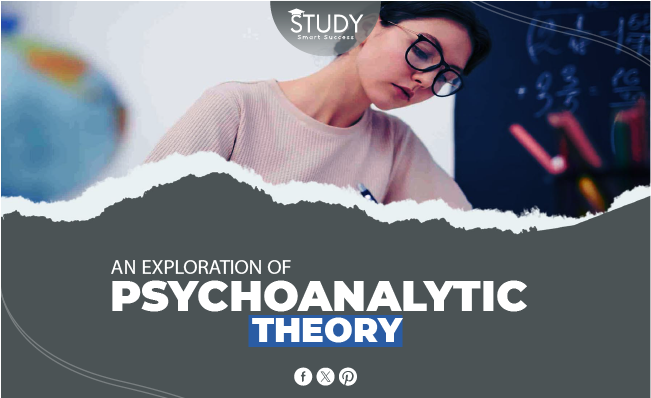Psychoanalytic theory, a psychological foundation, has long intrigued and interested people. In the late 19th century, Sigmund Freud developed a complex theory of behavior, emotions, and the conscious and unconscious mind. This book demystifies psychoanalytic theory for students and researchers, revealing its complexity and relevance today. Read about another philosophy of psychology called behaviorism.
The Foundations of Psychoanalytic Theory
Psychoanalytic theory holds that hidden forces, inner tensions, and previous experiences, particularly early childhood ones, shape behavior. Freud’s breakthrough concepts about the mind’s structure, the id, ego, and superego, help us understand human psychology.
- The Id Represents the primal, unconscious desires and impulses.
- The Ego: Balances the id with reality, performing rational, conscious thinking.
- The Superego: Embodies moral values, governing our sense of right and wrong.
Understanding these components helps you know why individuals do what they do and shows you that seemingly random or hard-to-explain behavior has deep roots in your unconscious mind.
The Methodology of Psychoanalysis
Psychoanalysis helps individuals by revealing their inner ideas and emotions. Psychoanalysts use dream analysis, free association, and Freudian slips to locate hidden aspects of the mind. This helps people become more self-aware and heal.
The Evolution of Psychoanalytic Theory
Since Freud’s time, Freudian theory has changed because of the work of many other thinkers who added to and altered Freud’s ideas. Carl Jung, a famous figure in the early days of psychoanalysis, came up with the concepts of archetypes and the collective unconscious, which helped people understand the mind in terms of more than just one person’s experiences. Melanie Klein studied how early relationships with primary carers change the mind by looking at object relations. These changes show that Freudian theory constantly evolves and is still helpful in learning the human situation.
From the early 20th century, psychoanalytic thought has critiqued, refined, and incorporated feminist postcolonial theory. This blending of ideas has improved and expanded our understanding of the human mind. Despite criticism and new psychological theories, psychoanalysis is still an essential mental health technique because it helps us understand emotional behavior and conflict.
Unique Insights on Psychoanalytic Theory
Psychoanalytic theory has existed for more than one hundred years, but it is still a lively field of study and practice. One unique aspect of this discovery is that it can be used in areas other than psychology, like writing, art, and cultural studies. This shows how general its ideas are.
Modern psychoanalysis has also changed to include new ideas about neuroscience and psychology. This disproves the notion that psychoanalysis is a rigid or out-of-date field of psychology. Psychoanalysts today are more aware than ever of how complicated the mind is. They combine Freud’s fundamental ideas with the latest scientific study to offer a more complete view of mental health.
Criticisms and Controversies Surrounding Psychoanalytic Theory
Freudian thought has advanced psychology but has also been challenged and debated. Because the hypothesis is too ambiguous to verify in the actual world, skeptics doubt its scientific validity. Some argue Freud’s emphasis on sexual and violent urges as the fundamental causes of behavior is simplistic or outdated.
There are also disagreements about how the theory’s focus on early childhood events and the idea of psychosexual development stages affect psychological development as a whole.
Despite these objections, Freudian theory supporters argue it is the best approach to comprehending how complex human emotions and behavior are. Modern psychoanalysis has expanded to encompass new psychological research and social developments. A personalized, in-depth approach to therapy is another important part of psychoanalysis that continues to help many people. This shows that the theory is helpful outside of academic talks.
Psychoanalytic Theory in Today’s World
In this modern age, when people are more aware than ever of mental health issues, Freudian theory can help a lot. The theory is still relevant because people are talking more about mental health on social media and in regular media. This shows that people are always trying to figure out who they are and what makes them think and act the way they do.
Integrating Psychoanalytic Concepts into Modern Therapies
It is impossible to overstate how much Freudian theory has changed the way therapy is done today. Many modern types of psychotherapy, like psychodynamic therapy, are based on the main ideas of psychoanalysis. They look at inner processes and early life events to help people understand their present problems. This addition shows how flexible the theory is and how it can improve therapy results. Psychoanalytic methods, such as studying therapist-patient transference and countertransference, may teach you about yourself and others.
Neuro-psychoanalysis, which links psychoanalysis with neuroscience, offers possibilities for integrating psychoanalysis and biology. This multidisciplinary method tries to figure out how unconscious processes show up in the brain. It gives Freud’s ideas a scientific basis and might answer people’s questions about how well psychoanalysis works in real life.
Freudian theory remains robust and versatile as it advances knowledge and treatment of mental diseases. Contemporary psychology and allied sciences continue to develop and be shaped by it, making it a significant aspect of discussions about behavior, mental health, and the mind.
Targeting the Right Keywords for Psychoanalytic Theory
Students and scholars studying Freudian theory online should focus on a few key phrases. Knowing “Sigmund Freud,” “unconscious mind,” “ego and superego,” and “psychoanalytic therapy” helps you locate what you need.
“Defense mechanisms,” “psychosexual stages,” “dream analysis,” and “transference” are standard Freudian theory terms. These phrases aid focused study and demonstrate how Freudian principles may be used in various psychological and treatment situations. Searching these phrases yields a lot of psychoanalytic theory-related material.
This includes academic articles, books, and online classes and talks. Psychoanalysis has a significant impact on modern society and ideas. Therefore, terms like “neuro-psychoanalysis,” “feminist psychoanalytic theory,” and “post-co postcolonial analysis” may help explain its links.
Conclusion
Psychoanalytic thought has traditionally helped explain human behavior and emotion by studying the unconscious. Its origins, techniques, and contemporary usage help us understand ourselves and others while learning more about the topic. Psychoanalytic theory is still essential for mind researchers since it drives us to investigate fundamental issues.
Psychoanalytic theory’s continued usefulness reveals that knowing the mind is still vital, even if Freud lived long ago. Students and researchers can continue to figure out the mysteries of the mind by combining old ideas with new ones. This will lead to progress in psychology and psychotherapy.



